Surgical procedures are often carried out using instruments made of stiff materials that interact with delicate biological tissues such as internal organs, blood vessel walls and small cavities. This incompatibility of stiffness is one of the sources of danger in many surgical procedures. The use of robots made of soft materials, also called soft robots, would limit such risks by reducing contact pressures and stress concentrations. Their intrinsic deformability would also increase the ability to maneuver in confined spaces.
This project provides a tremendous and ambitious application to the use of deformable robots and of the algorithms developped by our team. Soft robotics opens up new perspectives in minimally invasive approaches. These robots have a highly deformable structure, similar to organic materials, and the motion of these robots is created by deformation in the same way as the muscles in living animals. For instance, here is a sketch of a soft robot inspired by Gastropod:
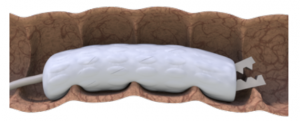
We anticipate that the compliant nature of soft robots and their large number of degrees of freedom will provide key surgical positive outcomes:
Surgical Robotics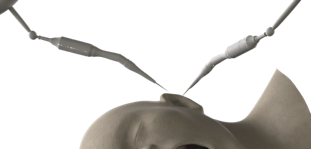
|
+ | Soft robotics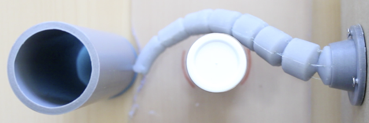
|
= |
|
|---|
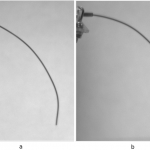 |
 |
 |
|---|---|---|
| Interventional Radiology (ANR IDEAS) |
Ear Surgery Simulation (with Inserm) |
Neurosurgical Simulation (with CHRU Lille) |
Link with the research team
The heart of the project is to find fast, accurate and generic modelling and control methods for surgical soft robots in interaction with anatomical tissue. Our scientific ambition is to:
- Provide the first accurate and robust numerical methods for continuum mechanics adapted to strong real-time constraints that demonstrate the ability to model soft mechatronics systems.
- Reconsider the methodology of parametrisation for patient-specific anatomical models thanks to the observation of the mechanical interactions with the soft robot through embedded sensors and medical image analysis.
- Rethink model-based motion generation and remote control with force feedback adapted to soft robotics and based on accurate deformable models computed at fast rates.
This three challenges follow the three scientific pillars of the team (numerical model, environment and control).
Related papers & videos:
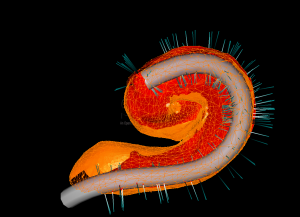 Numerical Simulation of Cochlear-Implant Surgery: Towards Patient-Specific Planning.
Numerical Simulation of Cochlear-Implant Surgery: Towards Patient-Specific Planning.
O. Goury, Y. Nguyen, R. Torres, J. Dequidt and C. Duriez
19th International Conference on Medical Image Computing and Medical Asserted Intervention (MICCAI), 2016, Page, Pdf, Video
 Vascular neurosurgery simulation with bimanual haptic feedback.
Vascular neurosurgery simulation with bimanual haptic feedback.
J. Dequidt, E. Coevoet, L. Thines and C. Duriez
12th Workshop on Virtual Reality Interaction and Physical Simulation (VRIPHYS), 2015, Page, Pdf, Video
 Registration by interactive inverse simulation: application for adaptive radiotherapy.
Registration by interactive inverse simulation: application for adaptive radiotherapy.
E. Coevoet, N. Reynaert, E. Lartigau, L. Schiappacasse, J. Dequidt and C. Duriez
International Journal of Computer Assisted Radiology and Surgery (IJCARS), 2015, Page, Pdf
 Introducing interactive inverse FEM simulation and its application for adaptive radiotherapy.
Introducing interactive inverse FEM simulation and its application for adaptive radiotherapy.
E. Coevoet, N. Reynaert, E. Lartigau, L. Schiappacasse, J. Dequidt and C. Duriez
17th International Conference on Medical Image Computing and Medical Asserted Intervention (MICCAI), 2014,Page, Pdf, Video
Funding sources:
This project has been submitted to ERC Consolidator Grant in 2015 (Grade B after Oral) and 2016 (Grade A but unfortunately, not sufficient funding). Given the good grades of the project, we have received the financial support of ANR and ERDF to submit a new version of the project.
| ANR (French research founding public agency): | ERDF (European Regional Development Fund): |
|---|---|
 |
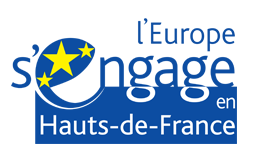 |


